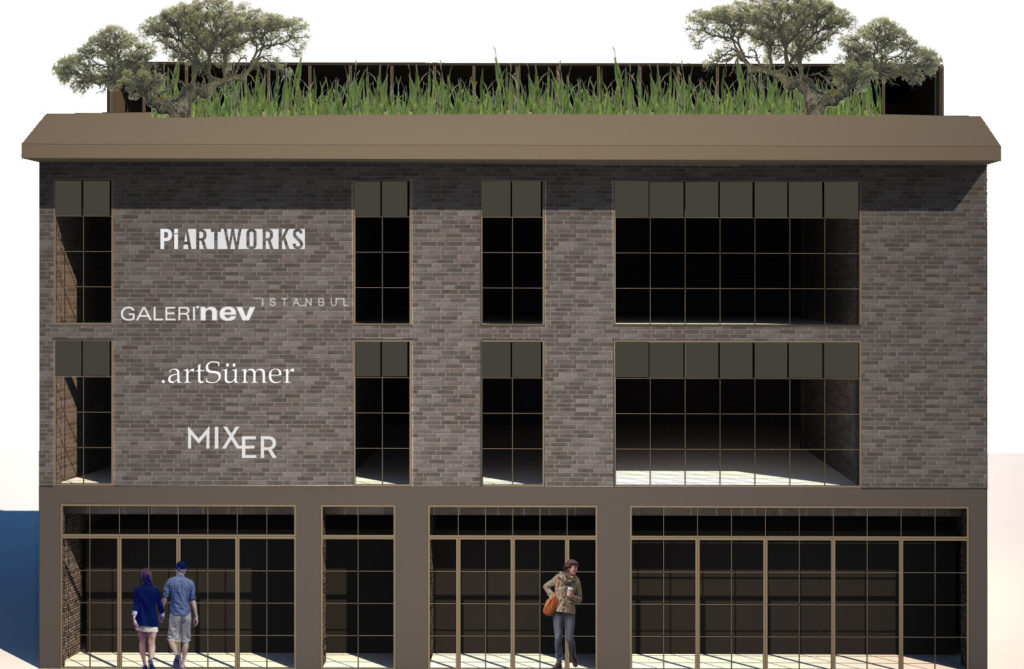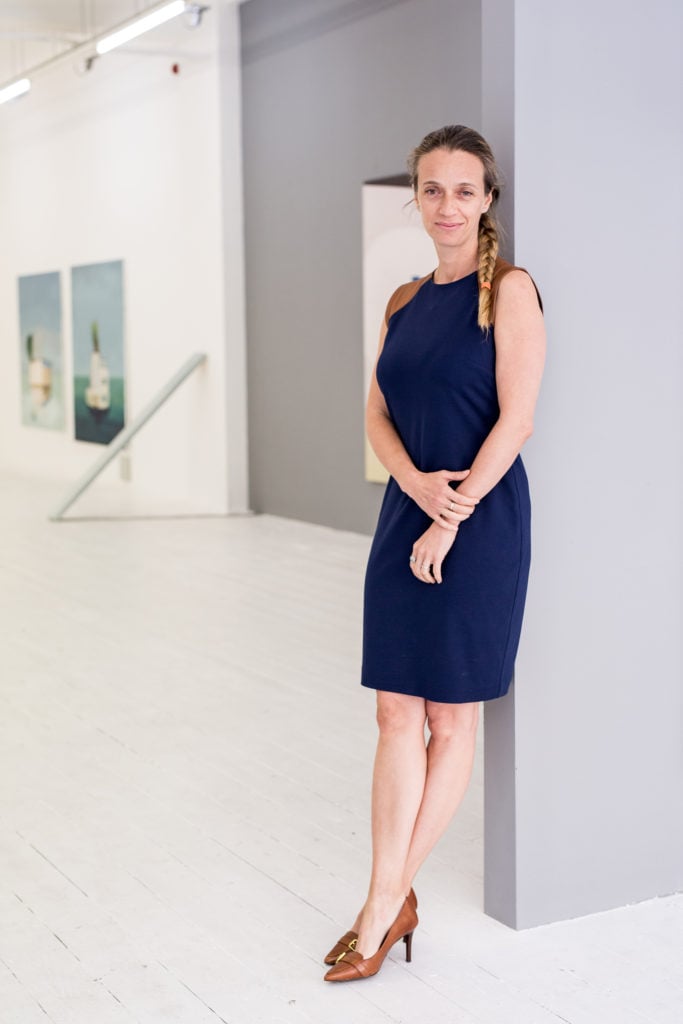Art World
As Istanbul Galleries Face Manifold Challenges, Dealers Band Together to Create a New Art Enclave
As the local scene struggles with the effects of political instability, synergies may be the key to survival.

As the local scene struggles with the effects of political instability, synergies may be the key to survival.

Hili Perlson

There are big changes afoot in the Turkish art scene. This week, as the city of Istanbul readies for the opening of the 15th Istanbul Biennial, and as Contemporary Istanbul—the city’s main art fair—is about to open one of its most international editions to date, a group of local dealers are launching a new art hub in the neighborhood of Karakoy. The collaborative opening points to a shift in the local scene: the political instability has left its mark on the finances and visibility of many mid-size galleries, and so the global trend towards finding models of working together is here translated into deeply involved synergies.
“About a year ago, a few dealers started coming together to talk about our needs, and began to standardize operations. We tried to stay closer to each other,” gallerist Jade Yesim Turanli, who runs the Istanbul- and London-based gallery Pi Artworks, told artnet News. “We all share the same collector base, and that is new. I’ve had my gallery in Istanbul for 20 years and this is a development of the last five years. We’ve finally figured out that being together is more valuable for all of us.”
Pi Artworks, as well as three other contemporary art galleries including Galeri Nev Istanbul, artSümer, and Mixer have banded together to open under one roof in a newly constructed building in Karakoy. Another gallery, Sanatorium, is moving to an address across the street.
“The political situation created the necessity,” Turanli said. “Foot traffic and international audience both dropped last year. If an art patron is coming to Istanbul for a business trip, previously they’d maybe stay a week, but now it’s just in and out. It’s important that if they have time to see one place, it could be our complex.”

Jade Yesim Turanli, Pi Artworks gallery founder and director.
The new hub is in fact a direct result of the current situation in Turkey in more than one way. The building was originally planned as a hotel, but the tourist industry has also suffered a blow, and the art dealers were able to take over the construction project that a hotel developer wasn’t able to finish.
The Turkish art scene has known better days. Neighborhoods like Beyoglu and Nisantasi are considered as the city’s oldest gallery districts, but between 2008 and 2012, following the opening of the museum Istanbul Modern, a slew of galleries opened in the area of Tophane.
“We founded Tophane Artwalk, created a map and organized open Sundays. On one open Sunday, I remember around 350 visitors. It was a great atmosphere,” Asli Sümer, of artSümer, told artnet News.
But then came the violent attacks on the galleries in Tophane by angry mobs in 2010. By 2012, many gallerists have moved away or closed down entirely.
The echoes of these attacks still resonate. In the new multi-level building, the ground floor is going to be a café as none of the dealers wanted to be visible and accessible from the street, Turanli explained.
“We have to be sensitive to the general audience, and I think some shows could work better in an environment that we can control. There have not been any incidents [in Karakoy] but we feel more secure like this,” she added.
The synergies between the galleries operating the building are also possible thanks to the fact that their programs are complementary rather than competitive. artSümer, for example, focuses on emerging artists, most of whom had their first gallery show with Sümer. (The gallery represents Gözde İlkin, a young artist who is part of the 15th Istanbul Biennial.)
Pi Artworks, on the other hand, works with mid-career artists, while Mixer specialize in editions and prints.
But besides sharing an address and patrons, Sümer points out that other, deeper synergies are possible, citing models like the highly popular gallery swap program, Condo. “Collaboration—local or international—is key in developing new audiences and I think everyone is aware of this now,” she told artnet News. “Gallerists in Istanbul who decide to close their spaces but continue representing their artists is also a strong possibility.”
“I think this is important because this keeps the art world sustainable; as long as the artist have space to show work they can keep creating.”
The new gallery building is located at Mumhane Caddesi No:48-50/3, 34425 Karakoy, Istanbul. The exhibition programs of the galleries are as follows:
Pi Artworks: Nancy Atakan – A Community of Lines, from September 20 – October 21.
Galeri Nev Istanbul: İnci Eviner – Beneath the Horizon, from September 20 – October 21.
artSümer: Gözde İlkin – Absent Demonstrations / Erdal Duman – Casus Belli, from September 11 – November 25.
Mixer: Ahmet Duru, Ali Elmacı, Ali Şentürk, Alican Leblebici, Ayşe Hilal Ateş, Berk Yüksel, Elif Esen, Evren Erol, Gökçen Dilek Acay, Hasan İlkan Cebeci, Meliha Sözeri, Meltem Şahin, Murat Can Kurşun, Nur Gürel, Oğuz Emre Bal, Özcan Saraç, Özgür Ballı O+oma+a, from September 9 – October 21.
Sanatorium: Kemal Özen – Artificial Hells, from September 10 – October 14.